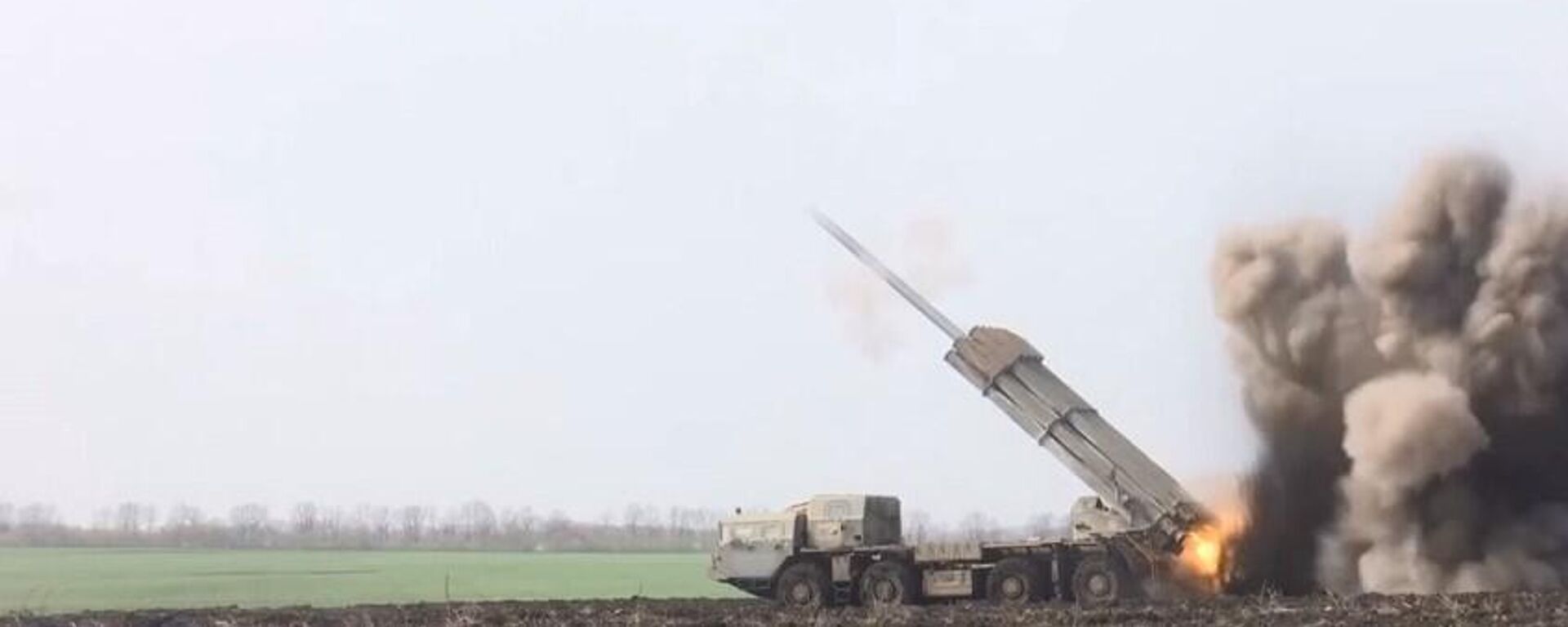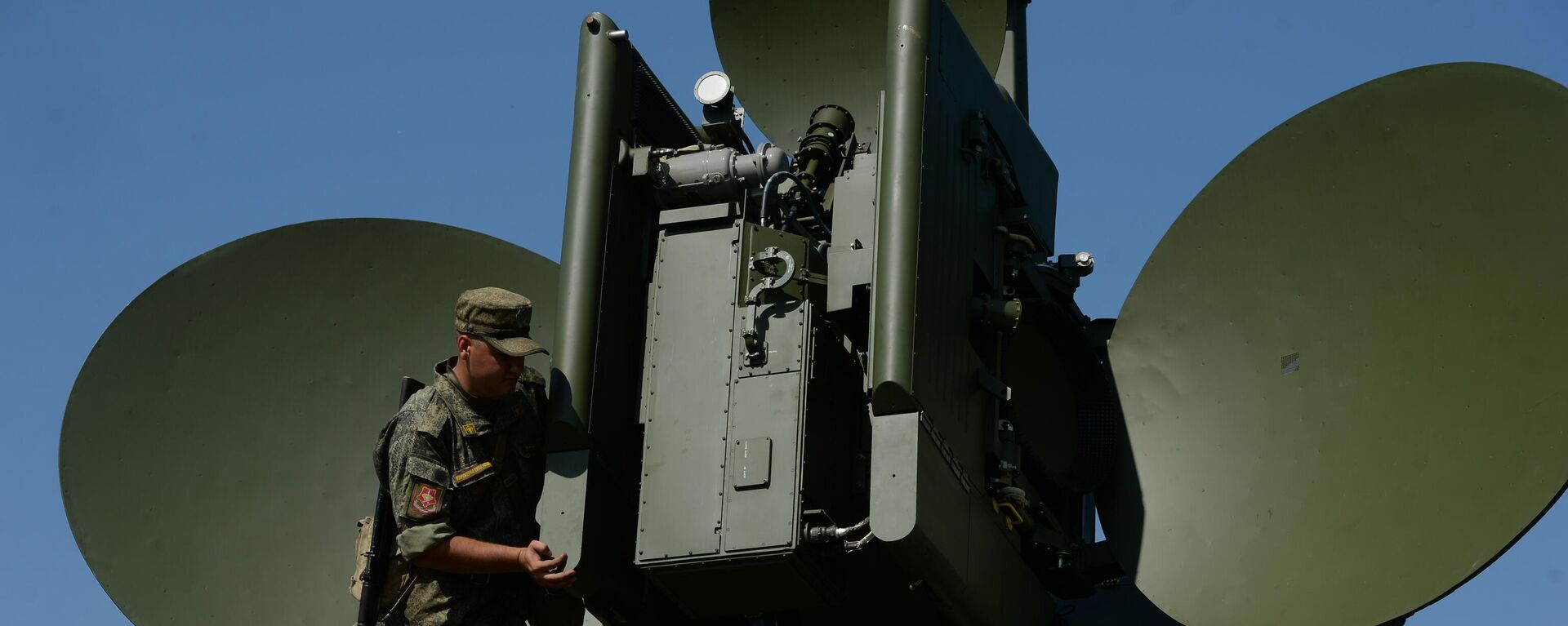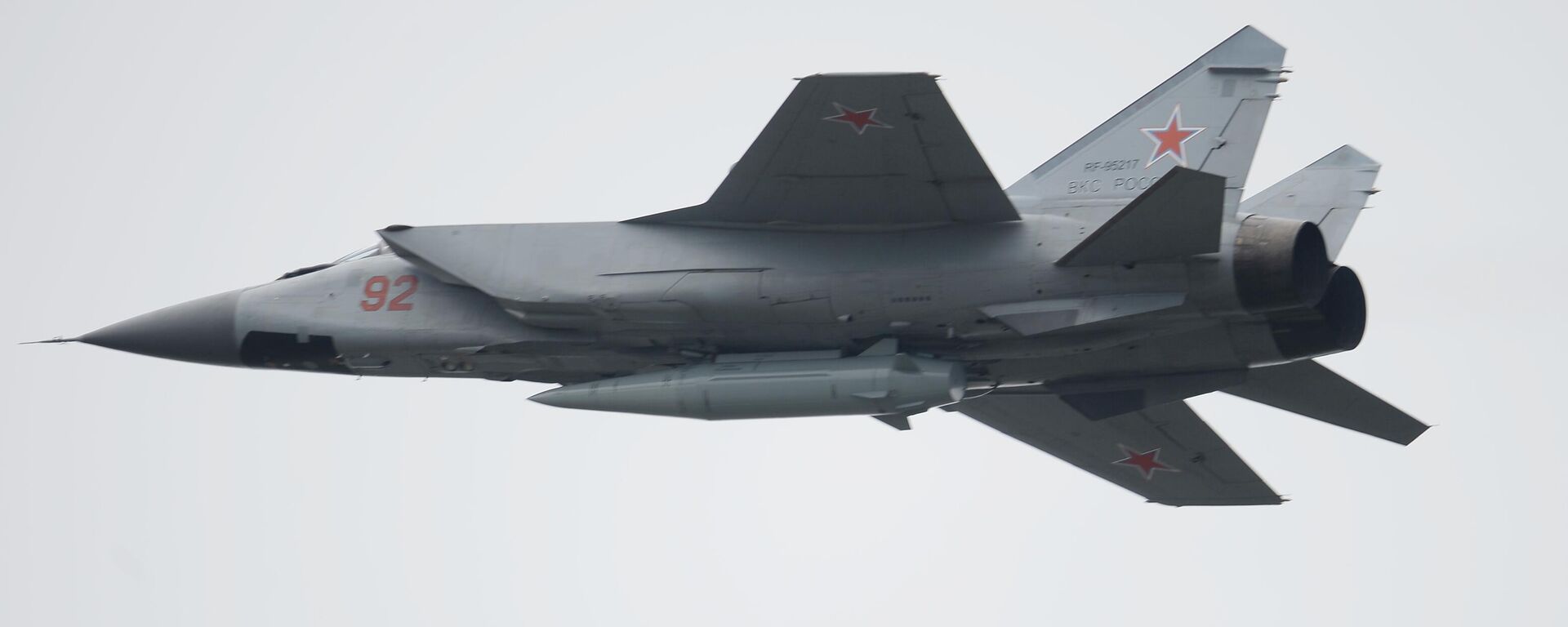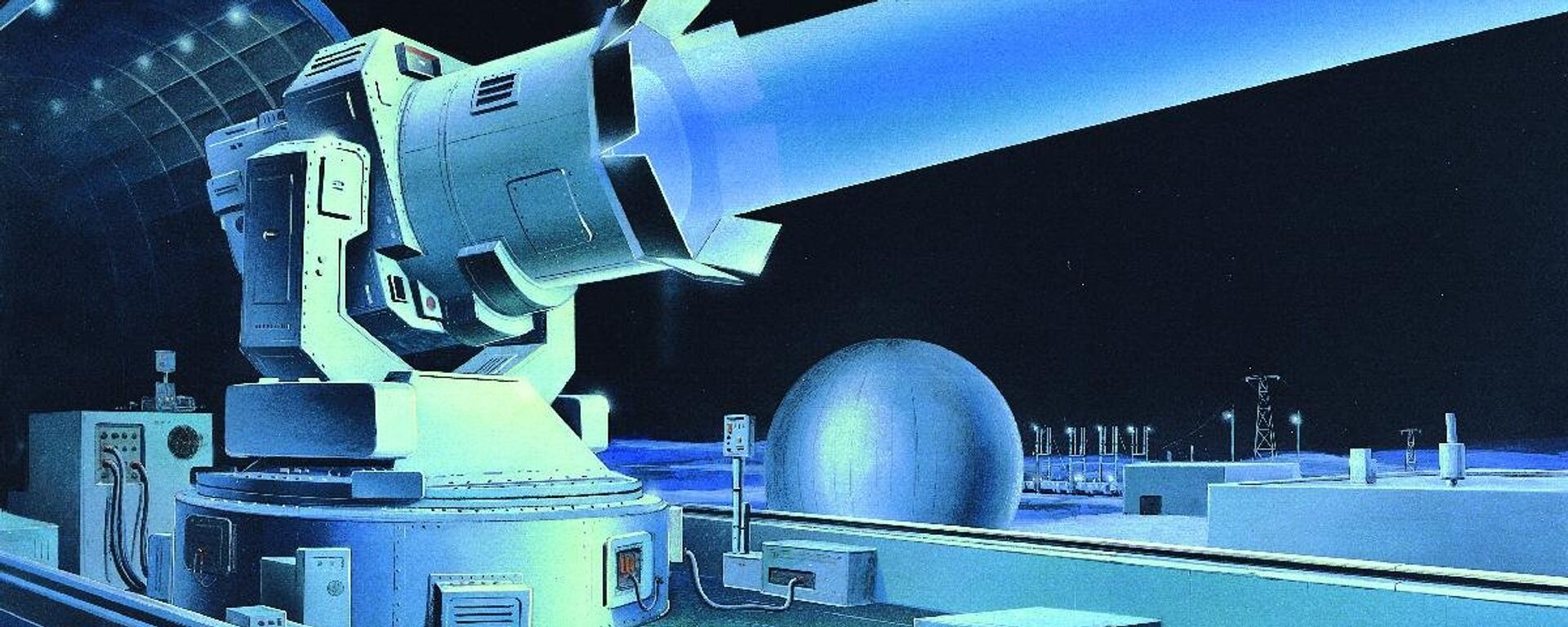Gunsmith Day: How Ukraine Conflict Improved Russian Arms

© Sputnik / Russian Defence Ministry
Subscribe
Longread
Despite sanctions and export controls, Russia has significantly expanded weapons production, outpacing the US and Europe, the Western mainstream press has admitted. Military experts have explained to Sputnik how the conflict has boosted Russia's defense industry.
Russia is manufacturing over two million shells and 200 tanks a year, tearing apart Western intelligence prognoses, the US mainstream press reports.
At the beginning of the conflict, Washington was betting on ramping up military supplies to Kiev and hoped to curb Russia's industrial capacity through a heap of sanctions. However, it turns out that Russia's production of weapons has not been hindered. Quite the contrary, it has doubled and continues to grow, the newspaper complains.
As a result, Russia’s current ammunition production is seven times greater than that of the West, per European defense officials. That spells trouble for Ukraine in the coming months, the media outlet says.
As Russia is celebrating Gunsmith's Day on September 19 – a professional holiday for all employees of enterprises of the country's military-industrial complex – Sputnik has decided to take a look at what is behind the industrial boost.
Special Operation in Ukraine Gave Boost to Russia's Defense Sector
"Any military operation, especially one as large-scale as the special military operation in Ukraine, certainly affects the increase in state defense orders and the development of the military industry," Viktor Litovkin, a retired Russian Army colonel and veteran military analyst, told Sputnik. "This is certainly true. […] Almost all areas have got an impetus for development."
While the Western press has largely brought its focus on the speeded-up production of munitions in Russia, Sputnik's interlocutors refer to improvements and innovations in various fields. These include manufacturing of small arms, artillery of various calibers, tanks, helicopters, and aircraft for various purposes, body armor and radios, binoculars, rangefinders, and so on and so forth, Litovkin noted.
"We heard from our president that the defense procurement has grown tenfold, especially in the production of unmanned aerial vehicles in the field of communications, in the field of reconnaissance equipment, target designation, and so on and so forth," the expert continued.
"In general, all areas of providing the armed forces with combat support systems, as well as fire support systems for attackers and defenders - all this has been developed. So here the influence of the special military operation is enormous, of course," Litovkin summarized.
How Russian Weapons Became Protected Against Enemy Drones
There have not been military actions of such intensity, power, and scale since the Second World War, according to Dmitry Drozdenko, a military analyst and chief editor of the Fatherland Arsenal Internet portal. Russia's tactics, strategy, and military science have "collided" with those of the West, he highlighted, adding that this prompted Russia's gunsmiths to explore new approaches, symmetric and asymmetric responses.
"Well, the most typical example is ordinary civilian quadcopter drones, which have become formidable weapons. Earlier we tried to make tanks and armored vehicles as mundane as possible, that is, invisible on the battlefield, now these vehicles are equipped with so-called 'verandas' or 'baskets.' This is protection from drones that drop bombs. […] Then FPV drones appeared, and accordingly special protection appeared, which is already routinely installed in factories - these gratings, trusses on top and the like."
At Russia's ARMY-2023 military-technical forum, which took place last month at Patriot Park in the Moscow region, one could see a Russian T-90M tank with additional protection against Javelins and drones in the upper part. The Tigr-M super-protected multipurpose all-terrain infantry mobility vehicle made a debut at the show. In general, the expo featured a lot of military vehicles with additional protection against drones, taking into account the experience of the special military operation in Ukraine.
How Russia Has Mastered Itself in Counter-Battery Combat
Drozdenko has drawn attention to the growing role of artillery duels on the battlefield. When engaged in counter-battery combat (which envisages the destruction or neutralization of the enemy's fire support systems), Soviet-era 152 mm 47 caliber howitzers (for example, 2S19 Msta-S) could be outperformed by their NATO 155 mm 52 caliber analogues, given the latter's greater striking range.
"The firing range of artillery in this case is very important: in a counter-battery fight, if they shoot at you from the maximum distance, and you simply cannot physically reach them, this is a problem," Drozdenko said.

New military equipment to take part in Victory Day Parade in Moscow
© Sputnik / Vadim Savitskii
/ To solve the dilemma, Russian gunsmiths created the 2S35 Koalitsiya-SV, a self-propelled gun which is expected to supplement and eventually replace Russia's 2S19 Msta. The Koalitsiya is equipped with 152.44 mm or 155 mm guns, and boasts a maximum firing range of 80 km, and a 16 rounds/min rate of fire. The Koalitsiya's combat characteristics allow it to beat NATO howitzers, such as the French CAESAR, Drozdenko pointed out.
© Sputnik
Russia's Lancet kamikaze drones (or loitering munitions) have also proven efficient in counter-battery combat, according to the expert.
"With their strike, the Lancets pushed the Western artillery further away from the front line. And, accordingly, we improved the quality of the battery control circuit. (...) This is an innovation, and a massive one," Drozdenko said.
What Russian Weapons Have Proven Especially Effective?
Currently, the domestic military-industrial complex has been working in three shifts to satiate the needs of the Russian military.
Most notably, the conflict has taught Russia that it is necessary to develop and improve high-precision weapons, according to Pavel Kalmykov, an analyst at a military and political analysis bureau and a lieutenant colonel in reserve.
"These are the Kalibr cruise missiles, various high-precision air-launched missiles – there's a whole line of them. The list could take a long time: the Kinzhal hypersonic missiles, land-based Iskanders, etc. […] It became clear that it is necessary to increase their production," Kalmykov told Sputnik.
Russia's high-power guided aerial bombs have also come in handy, per the military expert. He explained that aviation can use them without entering the enemy’s air defense zone, and drop them at a distance. And then the bomb proceeds controlled by a GPS or similar signal, he explained.
In addition, main battle tanks have made a historic comeback, according to the expert.
"Recently, and with the low intensity of combat operations, somehow the role of tanks was generally forgotten, and it seemed that they would become a thing of the past, everything would be decided by aviation, artillery, and so on. But the Ukrainian conflict showed that in a wide theater of military operations, tanks play a decisive role; when large formations of troops are met, the role of tanks is significant," Kalmykov said.
© Sputnik
What New Russian Arms May Appear in Combat Soon?
"On the front line are not only our troops, [but also] instructors who look at how our weapons are used, what their advantages are, what disadvantages they have, what can be improved, what can be strengthened, and so on," Litovkin underscored.
Russia's arms manufacturers have already learned a lot from the ongoing conflict, per Sputnik's interlocutors. On this basis, new systems will be produced.
"First, all analysts say that with the help of unmanned aerial vehicles it is possible to significantly increase the accuracy of artillery fire control," Kalmykov explained. "That is, the principle is this: one shot - one hit. That is, if guidance is carried out with the help of operators of any artillery system, multiple launch rocket systems or even some powerful cannon. That is, the projectile will land exactly on target."
"Now, if this problem is solved, then the conflict will move to a completely different level, the tactics of combat operations will change, and so on. That is, right now, domestic gunsmiths are working on this issue, how to create systems that, with the help of unmanned aerial vehicles, will accurately direct artillery fire to the target," he continued.
Second, Russia is improving its electronic warfare systems (EW). Previously, former Pentagon officers acknowledged that Russia's EWs are second to none, while Russian military experts hinted that the new Russian EW systems could affect the work of the satellites and even mute SpaceX's Starlink, if necessary.
Third, the latest models of Western weapons, multiple launch rocket systems, tanks, and self-propelled guns have been captured, Kalmykov highlighted. All this is also being studied, the expert said, adding that, accordingly, the best engineering solutions will be used in the domestic military-industrial complex.
Finally, Russia's defense sector is working on state-of-the-art weapons based on "new physical principles," President Vladimir Putin recently revealed. While the Russian president did not provide further details, observers say that this type of modern arms could include directed energy weapons; electromagnetic weapons; geophysical weapons; and radiological weapons, to name but a few. Speaking to Sputnik last week, veteran Russian military observer Viktor Murakhovsky presumed that President Putin most likely meant lasers and other high-energy physics-based weapons.
The Russian president always walks the talk: years ago, he referred to Russia's successes in developing hypersonic arms. Today, Russia's hypersonic missiles are efficiently used in the Ukraine conflict zones. So, one could easily conclude that soon one will see new Russian wonder-weapons developed by the nation's renowned gunsmiths.








